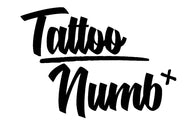Tattoos are becoming more popular globally. With this rise, many first-timers are looking for a tattoo this year. However, choosing the best place for your first tattoo is difficult for somebody who hasn't gotten inked yet.
We know tonnes of people that find this challenging to choose. To try and help with this monumental decision, we'll be breaking down a simple-to-follow, 3-step process to help you decide where to place your first piece of ink.
Finding the best place for your first tattoo

When getting your first tattoo, everybody is different. Because of this, we don't want to suggest a particular area where you "must" get a tattoo. Instead, you need to decide for yourself based on the following 3-steps:
- Scale and size
Regarding your first tattoo, it's not just about the placement. The scale is also significant. The size of the tattoo will depend on how complex you want it to be. With more detail comes a larger tattoo. This can also affect tattoo placement because specific designs require a larger skin area.
Some individuals get little tattoos the first time, while others get large ones. Tattoos on a large scale create a strong visual statement. So, if this is your first tattoo, you may decide that one huge design is preferable to a collection of little designs afterwards.
For instance, a smaller tattoo is perfect for your wrist or ankle. However, a larger, more detailed design might look better on your upper arm or thigh.
- Tattoo design
As slightly discussed above, the design also plays a role in the tattoo placement. When choosing the best place for a tattoo, your tattoo artist might have some expert advice on where the best location is based on size.
For instance, swirling patterns look particularly great on bony places like the wrist and ankle, such as snakes and flower stalks that may twist around your body's natural curves. However, If you want a solid square design, use a flat and level surface.
- Pain tolerance
The level of discomfort experienced when receiving a tattoo varies from person to person. Some people may not even blink in response to the pain, while others may sob uncontrollably. You must determine your pain level and advise the tattoo artist about it.
Pain may be described in a variety of ways. While this has not been confirmed scientifically, the following are some of the experiences associated with tattoo pain:
- Sharp - Sharp pain is sometimes referred to as stinging pain. This is a severe pain produced by the tattoo needle engraving delicate patterns and penetrating deeper than usual. It's typically felt in areas with thin skin and just above a bone where there is insufficient muscle.
- Burning - This sensation is similar to having something hot rubbed against your skin. It's not a strong sensation, but it's detectable. This is frequently due to the tattoo artist spending a long period concentrating on a specific spot.
- Dullness - This is believed to be the most pleasant pain you may experience during a tattoo. It's a little ache that you can easily distract yourself from.
- Scratching - a sensation similar to being scratched by a cat or having a paper cut. It's not painful, but it can be unpleasant.
- Vibrating - Lastly, this pain is defined as discomfort that moves in sync with the needle's vibrations in the bone. This is primarily due to the needle being pierced too close to the bone.
These are the pain sensations you can feel when getting a tattoo. Though these can get reduced with tattoo numbing cream, it's important to understand them and how you'll react when getting inked.
5 low-pain locations to consider your first tattoo
Based on the three guidelines we explained above, you should know where to get your first tattoo. If you're still worried about the painful areas, this next section will help. Below we'll explain 5 low-pain spots to get a tattoo:
Shoulders
Most people who get a shoulder tattoo say it hurts very little. Pain receptors are not equally distributed over the skin. As a result, regions such as the shoulders are less painful. Furthermore, the shoulder has a lot of padding for the art; thus, the needle doesn't vibrate on the bone.
You can even put this notion to the test by poking yourself in the chest and then the shoulder with your nail. The shoulder hurts less, even if you apply the same amount of pressure.
Biceps
A bicep is an excellent spot for people to acquire their first tattoo since it's not only less painful but also extremely noticeable and diversified. When you consider the physiology of the bicep, it makes sense that having a tattoo there is less painful because there's so much muscle protecting the bone.
Forearms
The forearm is another low-pain location that works well for individuals receiving their first tattoo. You can probably understand why if you grip your forearm. The bone is covered by a thick layer of skin and muscle in this body part.
Outer thigh
Because of the huge muscle in this location, it's ideal for inking with relatively minimal discomfort. Furthermore, because this is a large region, any work done here may be extensive.
The only significant disadvantage of this location is that it's adjacent to some of the most painful places, such as the knee and groyne. However, if you stay in a region with thick muscles, such as the front or side of the thigh, the experience is less uncomfortable.
Calves
The calf is an excellent location for vivid designs. The substantial calf muscle also acts as a barrier for tattooing. While the shin bone can be unpleasant due to muscular weakness, the pain in this place is lesser than in other areas.
Conclusion
After reading the above, you should better understand the best place for your first tattoo. Undoubtedly, this is a hard decision. However, try to think about it carefully and with professional guidance, such as your tattoo artist.
One of the main concerns is pain. But remember, it's possible to get numbing cream for tattoos. With this, the pain is less intense, and the procedure is more enjoyable.


